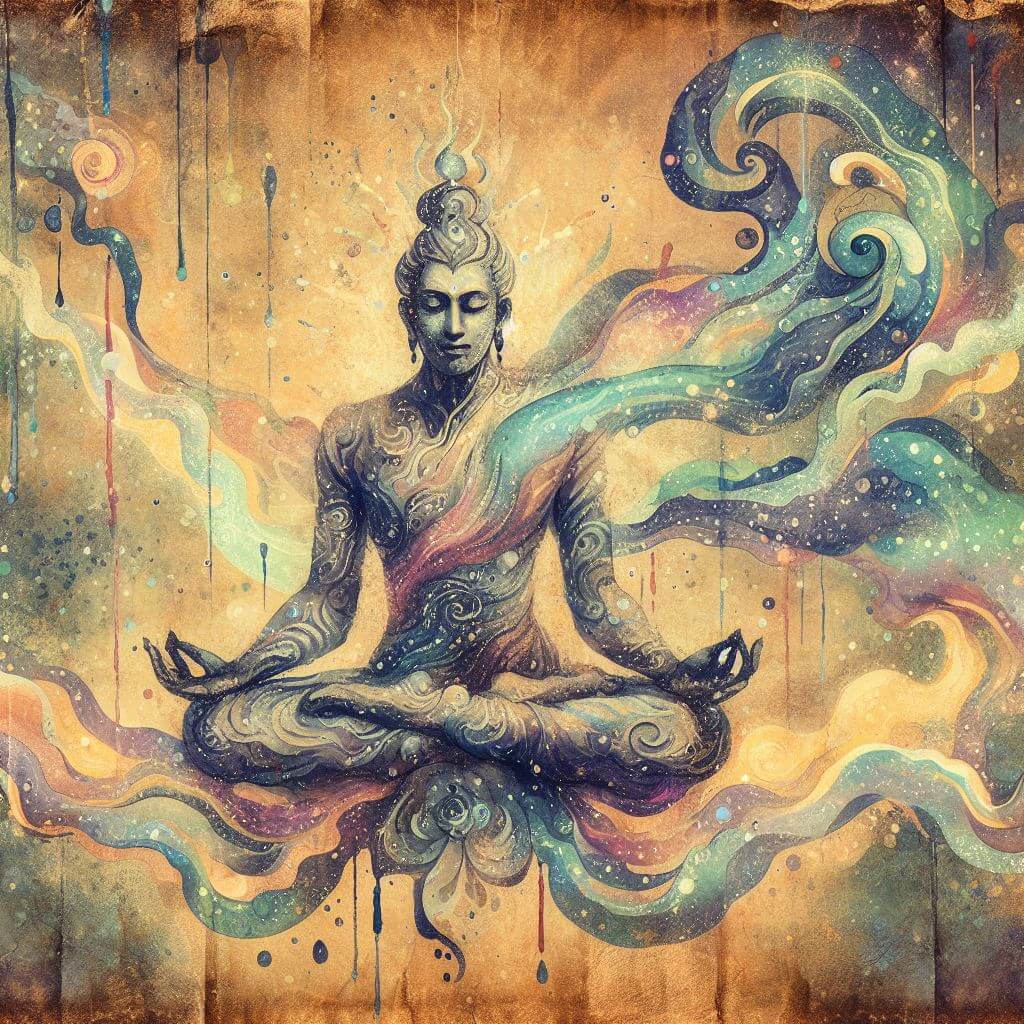
Vedic meditation, a term that might sound complex or mystical, is actually a simple and profound technique that can bring an immeasurable amount of tranquility and clarity into our lives. It’s a journey that takes us back to our roots, to the core of our being, and helps us navigate the turbulent waters of life with grace and ease.
Origin and Essence of Vedic Meditation
The word ‘Vedic’ originates from ‘Veda’, which in Sanskrit means knowledge. This is a type of meditation that stems from the ancient Vedic tradition of India. It’s a technique that has been passed down through generations, from teacher to student, maintaining its purity and effectiveness. It’s a form of meditation that doesn’t require any specific posture or chanting of mantras. Rather, it’s an effortless process that allows the mind to naturally transcend to a state of restful alertness.
Why Choose Vedic Meditation?
In our fast-paced world, filled with stress and distractions, Vedic meditation serves as a sanctuary. It allows us to disconnect from the external chaos and connect with our inner peace. This practice is not about emptying the mind or achieving a state of thoughtlessness. Instead, it’s about allowing our mind to settle down, to reach a state of deep rest, and to experience the silence and bliss that lies within us.
The Process of Vedic Meditation
The process of Vedic meditation is simple and straightforward. It starts with finding a comfortable sitting position. There’s no need to sit in a particular posture or to use any props. The idea is to be comfortable so that the body doesn’t become a distraction. Then, we gently close our eyes and allow our attention to go inward. We’re not trying to control or suppress our thoughts, but simply to observe them without judgment.
In this type of meditation, we use a mantra, a sound without a particular meaning, as a tool to facilitate the transcending process. The mantra is given by a qualified teacher, who has been trained in the tradition of Vedic masters. The mantra is not chanted out loud, but silently and effortlessly thought in the mind. The mantra acts as a vehicle, taking us from the surface level of thought to the deeper layers of consciousness.
As we dive deeper, we experience a state of restful alertness, where the body is deeply relaxed, but the mind is alert and awake. It’s a state of being where we’re fully aware, but free from the constant chatter of the mind. This is the state of transcendence, the goal of Vedic meditation.

The Benefits of Vedic Meditation
One of the greatest gifts Vedic meditation bestows upon its practitioners is the wide array of benefits it offers. It’s not just about achieving a state of peace during the meditation; the effects permeate into every aspect of our lives.
Practicing this technique regularly can significantly reduce stress and anxiety. The deep rest achieved during meditation helps to dissolve accumulated stress and fatigue. It rejuvenates the mind and body, making us feel more energetic and refreshed.
Moreover, Vedic meditation enhances our mental clarity and decision-making abilities. By quieting the chatter of the mind, it allows us to think more clearly and make decisions from a place of calm and centeredness, rather than from a state of overwhelm or confusion.
Vedic meditation also improves our emotional well-being. It helps us cultivate a more positive outlook on life, improves our relationships, and brings greater joy and happiness. It’s a tool for self-discovery, allowing us to connect with our true selves and live a more authentic life.
Incorporating Vedic Meditation into Your Life
Incorporating this technique into your daily routine is simple and doesn’t require a lot of time. Just 20 minutes twice a day – once in the morning and once in the afternoon or evening – is all it takes to experience the profound benefits of this practice.
The beauty of Vedic meditation is its flexibility. You don’t need a special place or specific conditions to meditate. Whether you’re at home, in the office, or traveling, you can practice Vedic meditation. All you need is a comfortable place to sit.
As with any new practice, consistency is key. Regular practice is what brings about the transformative changes in our lives. It’s not about striving for perfection or achieving a certain state. It’s about showing up for ourselves, day after day, and allowing the practice to unfold naturally.
Learning Vedic Meditation
Learning Vedic meditation from a qualified teacher is crucial. The teacher not only provides you with your personal mantra but also guides you through the process, helping you understand the nuances of the practice and answering any questions you might have.
Vedic meditation is not a one-size-fits-all technique. Each person’s experience is unique, and having a teacher to guide you through your journey can be immensely helpful. They can provide insights, share their experience, and offer support and encouragement when needed.
Vedic Meditation: A Holistic Approach to Well-being
Vedic meditation is more than just a stress-reduction tool. It’s a holistic approach to well-being that positively impacts all areas of our lives. It brings about a shift in our perspective, helping us see life through a lens of peace, clarity, and positivity.
Physical health is greatly improved through regular Vedic meditation. Scientific studies have shown that it can help lower blood pressure, improve heart health, and strengthen the immune system. It helps create a state of physiological balance, known as homeostasis, which is the foundation of good health.
Vedic meditation also supports mental health. It has been proven to assist in the management of anxiety and depression, improve sleep quality, and increase overall life satisfaction. It fosters a sense of inner calm, allowing us to handle life’s challenges with greater ease and resilience.
Moreover, it also promotes personal growth and self-development. It fosters qualities such as patience, empathy, and compassion. It enhances our creativity and problem-solving skills, and it helps us become more present and mindful in our daily lives.

Maintaining Regular Practice
While the benefits of Vedic meditation are plentiful, they are most pronounced when the practice is regular. Consistency is the key to reaping the full rewards of this ancient technique.
Regular practice doesn’t mean you need to meditate for hours on end. The important thing is to make it a part of your daily routine, just like eating or brushing your teeth. It’s about setting aside a little time each day for your well-being and personal growth.
Remember, it’s not about striving for a certain experience or trying to control your thoughts. It’s about being gentle with yourself and allowing the process to unfold naturally. Some days, your mind might be calm, other days it might be busy. That’s perfectly okay. The goal is not to achieve a certain state, but to cultivate an attitude of acceptance and non-judgment.
The Journey Continues…
Embarking on the journey of Vedic meditation is like setting sail on a vast ocean. There’s so much to explore and discover. It’s a journey of self-discovery, of returning to our true nature, and of experiencing the deep peace and joy that lies within us.
Vedic meditation is not just a practice, but a way of life. It’s a path that leads to a more peaceful, joyful, and fulfilling life. It’s a gift that keeps on giving, enriching our lives in ways we could never have imagined.
As you delve deeper into the world of Vedic meditation, remember to be patient with yourself. It’s not about reaching a destination, but about enjoying the journey. Happy meditating!



